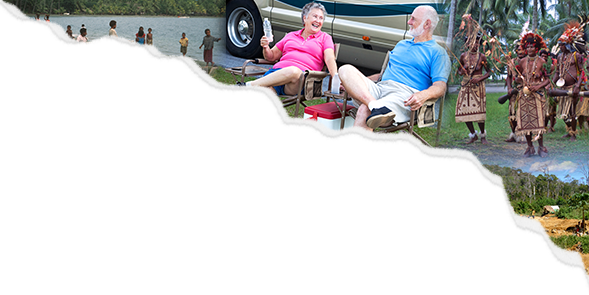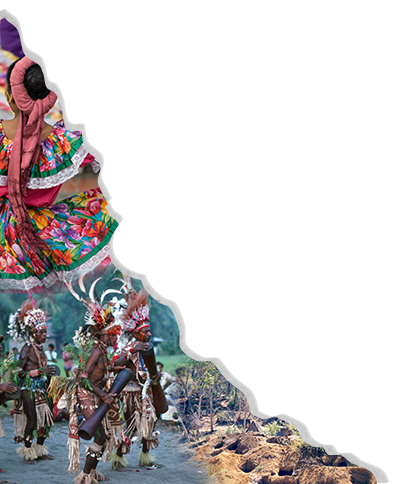By Andrew Gilbert
This short two-part blog post is a set of reflections on the value of teaching with sequential art, the result of a course I recently taught entitled “Anthropology and the Graphic Novel.” In part, I taught the course in order to develop a better understanding of the medium for a collaborative graphic ethnography that I am working on. As more and more anthropologists experiment with graphic forms of representation in conducting and communicating their research to academic and non-academic audiences (Atalay et al. 2019), there will be more opportunities to explore how and why one might want to teach with them (see, for example, Speck 2019).
In Part I, I discuss some of the nuts and bolts of the course design in relation to the goals I had in teaching it. In Part II, I reflect on what I learned over the course of teaching. My experience suggests that sequential art offers unique and compelling ways to advance some of the core goals of cultural anthropology (and other social and humanistic sciences): to make the familiar strange and the strange familiar, to humanize socially marginalized populations, to spark critical reflection through comparison of distinct historical and cultural contexts, to draw attention to the social contexts that produce anthropological knowledge, and to encourage greater consideration to the relationship between what we learn/understand and how we learn/understand.
Course Design
Given that there are still very few examples of anthropologists or ethnographers explicitly working in the graphic medium (although see Newman 1998 for an early example), the course reading list was drawn mostly from the growing catalogue of non-fiction graphic novels.[1] I was guided in my selection by a few requirements. The books had to be in English, but where possible I wanted to get the students to encounter difference – that is, different social, cultural or historical contexts than their own. I wanted some of the books to be about the encounter with difference, that is, of the writer/illustrator’s engagement with an unfamiliar social, cultural, or historical setting. I was also seeking books about events or moments for which there were other media available so we could think about the effects of form on communication. And I wanted a variety of styles and genres, so we could discuss the variable ways that authors/writers use literary devices to create expectations and connect with their readers. As I researched and read titles that were available, it soon became clear that a majority of books featured conflict of one sort or another (war, dissent and revolution, migration, the struggle for civil rights); not only is this a common narrative feature of story-telling, but in my class it also captured the students’ attention by building in a sense of drama defining the stakes of the tales being told.
In the end, I chose three childhood memoirs: Persepolis by Marjani Satrapi, which is set in Tehran during the Iranian Revolution; Marzi by Marzena Sowa and Sylvain Savoia, which is set in communist Poland during the years of the Solidarność movement; and Fatherland by Nina Bunjevac, which is set in Canada and Yugoslavia within the context of a family torn between committed socialists and anti-communists willing to commit political violence. I also chose two examples of comics journalism that focus on war and its aftermath: Joe Sacco’s Safe Area Gorazde, about the Bosnian war of the 1990s, and Rolling Blackouts by Sarah Glidden, in which the author follows two freelance American journalists and an ex-Marine as they travel and write stories of life after the Iraq war and the refugee flows it induced. I chose one example of political journalism/activism, Kate Evan’s Threads from the Refugee Crisis, set in the semi-formal refugee camp on the outskirts of Calais in France near the Eurotunnel to the UK. I selected one example of oral history, the three volumes of March by John Lewis, Andrew Aydin, Nate Powell, which is a first-hand account of the civil rights struggles of the American South in the early 1960s; and one example of ethnographic fiction, Lissa by Sherine Hamdy, Coleman Nye, Serula Bao, and Caroline Brewer, set in the years leading up to and including the Arab Spring in Cairo in early 2011.[2]
The course was a third-year “Special Topics” anthropology seminar, and the students were a mix of anthropology majors and students from other departments like psychology, political science, health studies, and media studies. The majority of class time was devoted to developing students’ analytic skills, particularly their ability to consider the communicative and generative effects and affects of the reading experience – or the relationship between the “what” and the “how” we understand. At first, we focused on individual graphic books, then compared across books, and then compared the graphic novels to other media that touched upon the same events or subject matter (such as photographs, song, video/film, painting, and newsprint). Grading was based upon participation in discussion, in-class presentations, written reader responses, and a final presentation and paper.
Before we took up the individual graphic novels, we read parts of Understanding Comics by Scott McCloud and Unflattening by Nick Sousanis to develop an analytic vocabulary and awareness of the unique affordances of sequential art (like comics, graphic novels, etc.). These included how time worked and could be manipulated, how complexity could be communicated, and how sequential art requires a more active participation on the part of the reader than other forms of communication like text or video. The concept of “affordance” was part of this analytic language we used in the course because it offered a useful way to break down and understand the properties of things (like sequential art)—from elements like shading, color, and design of the words to the size of panels and their location on the page—and the relations between them.[3] But those properties only come to have an effect or meaning when they come into contact with particular actors. In other words, the affordances of any particular example of sequential art lie not only in the properties of the art itself, but also in the person perceiving it and the moment of its perception. This helped give the class a language to discuss and understand why different students could have distinct reactions to or even interpretations of the same scenes in the graphic books.
As they read, they were bringing to bear their individual histories, socialization, social location, and experiences, which afforded them distinct understandings of the material.
And, as I discuss in Part II of this essay, this may also have facilitated class participation more quickly than is the case with more “academic” texts.
Andrew Gilbert is a Senior Researcher at the Ethnography Lab at the University of Toronto and a sociocultural anthropologist who has been conducting ethnographic research in Bosnia and Herzegovina for nearly twenty years. His first research project focused on the politics of international intervention and the relationship between the historical imagination (how people conceive of history) and the political imagination (how people conceive what is politically possible). Recent research has investigated the conditions that create openings and closures to political experimentation and social transformation, focusing on a series of worker-initiated protests and their aftermath in the Bosnian city of Tuzla. This has led to a growing interest in collaboration and in the political and ethnographic potential of diverse media, such as audio documentary, photographs, and graphic ethnography.
[1] A potential and serious limitation of a course like this is the cost. If students paid the hardcopy list price for just the graphic novels, it would be over $200 US ($265 Canadian). I discovered that there are various electronic versions of many of the books now available to purchase, as well as used hard copies on popular websites like Amazon, AbeBooks, Alibris, and Powell’s, and this can bring the cost down significantly. That said, some of the books I assigned were unavailable in an e-version and others were hard to get because of limited print runs. Moreover, I am ambivalent about the e-versions, because these books were not created for a screen and often the screens that students used to view e-versions were smaller than the books themselves. In order to accommodate the issue of cost, the university’s library purchased a copy for a reserve list, and I ran a second reserve list out of the departmental office.
[2] Other excellent titles which I could not use include Wage Slaves by Daria Bogdanska; The Arab of the Future series by Riad Sattouf; The Best We Could Do by Thi Bui; Oil and Water by Steve Duin and Shannon Wheeler; A.D.: New Orleans After the Deluge by Josh Neufeld; The Photographer by Emmanuel Guibert; Hostage by Guy Delisle; and Ichi-F by Kazuto Tatsuta.
[3] The concept of affordance is more widespread in the world of design, psychology, and political science than in anthropology. Recent examples of writing on affordances by anthropologists include Webb Keane’s 2018 article “Perspectives on affordances, or the anthropologically real” in the journal HAU and Tim Ingold’s 2000 book The Perception of the Environment: Essays on Livelihood, Dwelling, and Skill.



